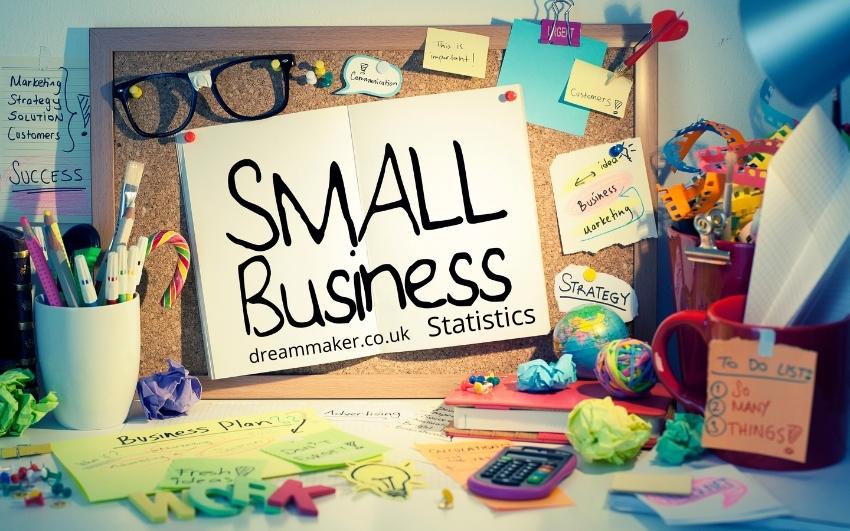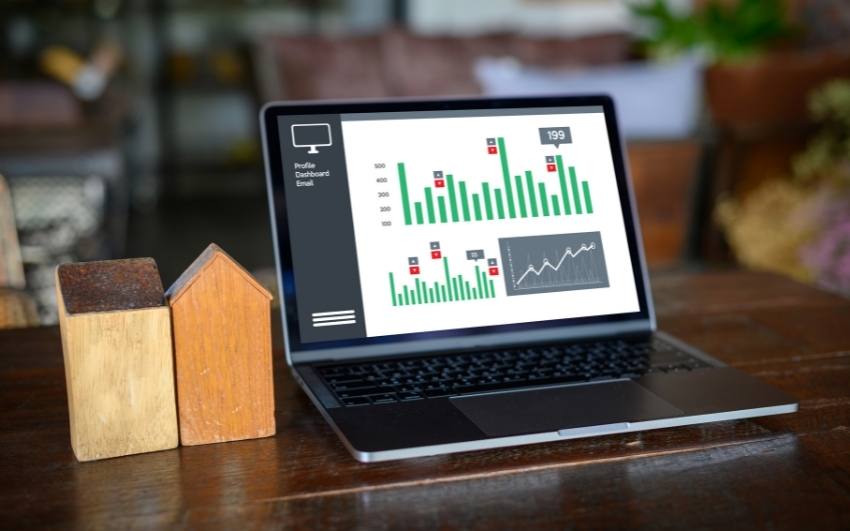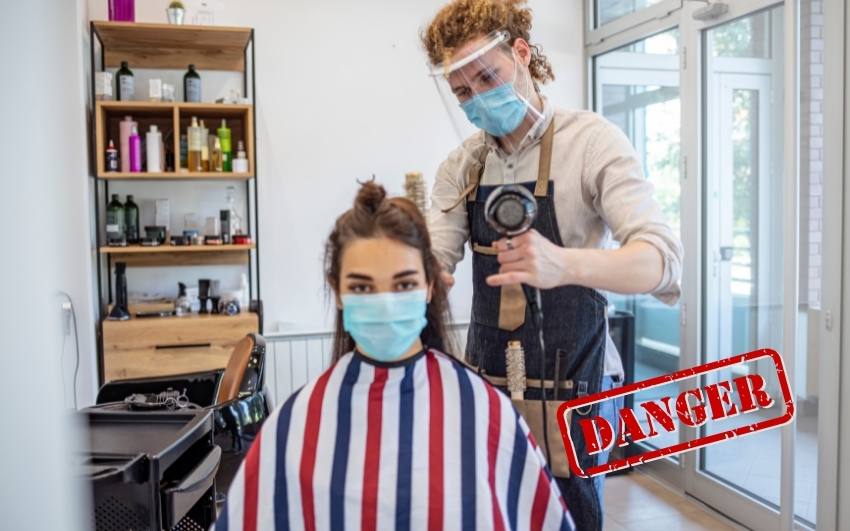
Businesses today are faced with an ever-changing landscape. Technology is advancing rapidly, and consumer tastes are constantly evolving. As a result, companies must continually adapt to remain competitive according to recent small business statistics.
Below are some small business statistics, facts, stats, and trends that owners should know to stay ahead of the curve.
One trend that businesses must keep an eye on is the rise of mobile commerce. More and more consumers are using their smartphones and tablets to make purchases, and this trend is only going to continue to grow.
To stay ahead of the competition, businesses need to make sure that their website is mobile-friendly and offers mobile payment options.
The future of business is all about being on the go.
As more people start their businesses and work from home, they must consider this when designing a company culture or organizational structure because nothing can stop you, like not knowing how to communicate with your employees efficiently when there aren’t enough hours in one day.
Table of Contents
Do you dream about being a sole proprietor or starting your own business?
Many people desire to take control of their own time and set their own goals. Having complete control over your schedule and goals sounds lovely, but it might be difficult, sometimes overwhelming, and even perplexing.
Knowing what’s going on in the small business world may be pretty helpful, whether you’re running a brick-and-mortar store or an eCommerce firm. Such knowledge allows you to better manage your possibilities and risks, ensuring that your sole proprietorship career is thriving.
The following 121 small business facts will assist you if you already have your own small or large company or are preparing to start one soon.
You’ll learn how a small business functions, the economy’s effect on it, what influences many small enterprises, what entrepreneurship entails, and much more.
General Small Business Stats, Facts, and Trends

Small businesses are a vital part of the American economy, accounting for more than half of all private-sector jobs. According to the Small Business Administration, there are more than 30 million small businesses in the United States, and they employ nearly 60 million people.
The vast majority of small businesses are sole proprietorships, which means they are owned and operated by a single person. Nearly 80% of all small businesses fall into this category. The next most common type of small business is a partnership, followed by corporations and limited liability companies (LLCs).
Most small businesses are service-based, providing healthcare, legal assistance, or home repairs.
1. Small businesses in the United States number 30.7 million, accounting for 99.9% of all US firms.
2. Small firms in the United States generate more than 1.5 million jobs every year. This proportion represents 64% of the total number of new employment created in the US.
3. Small businesses fail at more than 50% after just one year.
4. Small businesses fail more than 95 % of the time after five years.
5. One of the most challenging obstacles you’ll face when creating a business plan is low-quality labor.
Small Business Industry Stats

6. According to a recent study by Bankrate, about 58% of small company owners start their new, independent firm from the ground up.
7. 18% of new company owners got their firm from a small company owner.
8. Small business owners are more likely to invest in a brand-new franchise site than an existing one. Only 6% of small company proprietors opted for an established location, whereas 20% invested in a new one.
9. Food and restaurant (11%), business services (11%), health/beauty/fitness (10%), general retail (7%), and home services (6%) are among the fastest-growing small company sectors.
10. There are 31.7 million small firms in the United States, with 3.7 million micro-enterprises with ten or fewer people.
According to the Small Business Administration, over 30 million small businesses in the United States. These businesses employ nearly 60 million people, and they generate over $9 trillion in annual revenue. Small businesses are a vital part of the American economy, and they play a significant role in job creation and economic growth. In addition, small businesses are often the backbone of their local communities. They provide goods and services vital to everyday life, and they help create a sense of place and identity. Without small businesses, many communities would simply be unrecognizable.
Food and Restaurant Sector
11. Small businesses, which account for 22.5% of firms in general, are prevalent in the food and beverage industry (1).
12. Since 2014, consumer spending in this sector has risen steadily. In the first year, consumption rose by 2.6 %.
13. The predicted accommodation and foodservice market value in 2025 is $14.8 billion.
14. The restaurant sector has seen a decline in total sales of -19.2% since 2019.
15. The anticipated total sales rebound in 2021 will be 10.2%.
The food and restaurant sector is one of the most significant industries in the United States. It employs millions of people and serves billions of customers each year. The industry includes many businesses, from small family-owned restaurants to large international chains. There are also numerous food service businesses, including caterers, grocery stores, and food trucks. The food and restaurant sector is constantly changing and evolving as new trends and technologies emerge.
For example, the rise of delivery apps has revolutionized how many people order food. And the popularity of farm-to-table restaurants has led to an increased demand for local and sustainable ingredients.
Retail Sector
16. The retail sector is the most common industry for small businesses, with over 11% of them operating there.
17. The disease’s impact on the industry was minor, with sales declining 6% to $4.56 billion during the epidemic.
18. In 2021, the firm’s anticipated retail sales will be up by 6.6% to $4.86 billion.
19. In 2026, the retail industry is expected to be worth $5.52 billion.
The retail sector is an integral part of the economy, accounting for a significant proportion of GDP in many countries. Retailers employ millions of people worldwide, and the industry is also an important source of tax revenue. The retail industry has undergone dramatic changes in recent years, with the rise of online shopping and the growth of mobile commerce.
This has led to a decline in traditional brick-and-mortar retail outlets as consumers increasingly purchase online. However, there are still many successful brick-and-mortar retailers, and the retail sector is expected to continue to play a vital role in the economy in the years to come.
Business Services
20. Industry losses have been severe due to the COVID-19 epidemic, with sales volume dropping by 16% through 2020.
21. The business services industry, which has been struggling to recover more than any other sector, is expected to grow at +0.15% over the next year.
22. The expected corporate profit for 2021 is projected to rise by 0.15% to $1.69 billion.
23. According to a study published in the business journal The Economist, by 2025, the global computer security market will be worth about $2.41%.
Businesses of all sizes rely on various services to function efficiently and effectively. From bookkeeping and marketing to HR and IT, many business services can help organizations streamline their operations and improve their bottom line. While some businesses opt to outsource these services, others choose to hire in-house teams. Whether to outsource or insource business services depends on a variety of factors, including cost, expertise, and availability. In any case, businesses that invest in quality business services can reap many benefits. Improved efficiency, increased productivity, and boosted profitability are just a few of the advantages of investing in quality business services.
Health, Beauty, and Fitness Services Sector
24. In the health, beauty, and fitness sector, approximately 9% of firms are small businesses.
25. The healthcare industry is expected to bounce back the most after the pandemic, with a recovery rate of 16.6 %.
26. The market value of the health services industry is expected to be $4.32 trillion in 2026.
27. In 2026, the beauty services industry is expected to have a revenue of $14.8 billion.
28. In the health services sector, industry revenue is expected to reach $38 million in 2026.
The health, beauty, and fitness services sector comprises a wide range of businesses that provide services to help people look and feel their best. This includes everything from hair and nail salons to fitness centers and spas. The sector is increasing as more and more people become aware of the importance of taking care of their health and appearance. In addition to traditional businesses, the industry includes a burgeoning sector of mobile apps and online services that provide convenient access to health and beauty information and products. With the global wellness market projected to reach $4.2 trillion by 2022, it is clear that the health, beauty, and fitness services sector will continue to thrive in the years to come.
Residential and Commercial Services Sector
29. 7% of small firms provide residential and commercial services.
30. Commercial and residential service franchises existed in 2019, with 67,226 locations.
31. In 2020, the number of franchises increased to 68,008.
32. The annualized establishment growth rate from 2015 to 2019 was +1.09 %.
33. The creation rate of the sector increased by 1.14 % between 2019 and 2020.
The residential and commercial services sector is a broad category that covers a wide range of businesses, from building maintenance and janitorial services to landscaping and security. This sector also includes firms that provide personal services, such as pet care, dry cleaning, and laundry. In general, the firms in this sector focus on delivering quality services to their customers, whether homeowners or business owners. As the economy rebound, the demand for these services is expected to grow. In particular, the construction industry is forecast to experience strong growth in the coming years, which will create a need for increased demand for commercial and residential services. As a result, businesses in this sector are well-positioned to take advantage of this growing market.
Small Business Owner Demographic Stats

34. Women-owned and minority-owned businesses trail significantly behind those owned by white males.
35. Women-owned firms have increased by more than 114% over the last two decades.
36. During those two decades, the revenue share of female-owned firms has declined by 0.02%.
37. Many small companies do not have a college education.
38. Minority-owned firms are less likely to seek outside financing.
According to the Small Business Administration, there are approximately 28 million small businesses in the United States. These businesses employ about 56 million people or roughly half of the private workforce. Who are these small business owners? The SBA reports that they are diverse, with no one racial or ethnic group making up a majority. In terms of age, the largest group of small business owners is 45 and 54. However, there is a significant number of young entrepreneurs, with about 24% of small business owners being under the age of 34. Geographically, the majority of small businesses are located in urban areas. However, there are also many rural businesses, accounting for about 20% of all small businesses.
Gender Small Business Statistics
39. According to the National Association of Women Business Owners, it’s been estimated that 51% of all businesses in the United States are at least 51 % owned, controlled, and operated by at least one woman.
40. Almost 9 million individuals work for them, generating $1.7 trillion in economic output.
41. Over the last two decades, women-owned firms have risen by nearly 114%.
42. In the United States, there are 9.3 million women-owned firms, accounting for 39 % of all US employer companies.
43. Only 8% of all employees work for women-owned companies, but they account for 4.2 % of total business income.
The number of women-owned businesses has been on the rise in recent years. In the United States, it is estimated that there are now more than 11 million such businesses, accounting for nearly a trillion dollars in annual revenue. While this is undoubtedly a significant achievement, it is essential to remember that women still face substantial challenges in starting and running their businesses. For example, research shows that women are less likely than men to receive venture capital funding and are more likely to experience difficulty accessing credit. Additionally, women-owned businesses are often concentrated in specific sectors, such as health care and education, which may be less profitable than others.
Race Small Business Statistics
44. According to a 2018 US census, just 5% of Black people were self-employed.
45. Minorities are far less likely to attract outside investment. Therefore they must rely on family and personal savings.
46. The personal credit card use rate for company financing among black Americans is 16.6%.
47. The following races make up the US-born labor force: white small company owners 3.8 %, Asians 2.5 %, Hispanics 1.6 %, and Black Americans 1.1 %
Age Small Business Statistics
48. The majority of the creators of new firms are in their 40s.
49. Although the average age of SMB entrepreneurs is around 37, startup SMB owners are more likely to succeed between the ages of 30 and 50.
50. The probability of startup success falls after the age of 50.
Degree in Small Business Statistics
51. Only 44% of independent business owners have obtained a bachelor’s degree or higher.
52. 31% of small company owners have obtained an associate degree or another college course but do not yet have a bachelor’s degree.
53. 20% of the respondents had a GED (General Educational Development) certificate or were high school graduates.
54. According to the Ernst & Young’s Small and Medium-Sized Business Survey, 24.7% of small business owners had not completed high school education.
55. According to research, a successful entrepreneur is typically male, white, better-educated, and comes from two-parent, high-earning families.
Income Small Business Statistics

56. The average revenue of a small firm without employees is $46,978 per year.
57. Small company owners earn an average of $71,813 per year.
58. The median annual income of small company owners is $100,000 or less.
59. Women’s small business owners earned $130,000 on average in 2007, versus $570,000 for male small company owners. This is more than four times as much.
60. In 2016, the number of small firms with no paid employees earning between $1 million and $2.49 million in income rose by 1.6 %.
Women-Owned Businesses Stats
61. According to a survey conducted by the 2021 Small Business Trends Alliance (SBTA), 77 % of female business owners anticipate their firms to survive after the COVID-19 epidemic.
62. In a survey conducted by the Institute for Women’s Entrepreneurship and Smart Start, 54 % of black women-owned firms were entrepreneurs. One of the most significant numbers of women-owned businesses among any race group is 56%.
63. According to the Small Business & Entrepreneurship Training and Assistance Act of 2018 (SBTA), the top issues that female entrepreneurs face that aren’t COVID-related are advertising and marketing, cash flow/lack of capital, retention of employees/recruiting, offering/managing benefits, administrative tasks and tax compliance.
64. Female-owned firms anticipate that financing will be obtained in the following ways: 43 % by cash, 15% by ROBS (rescue operations business loan), 13% from family and friends, 7% via an SBA loan, 7% via a line of credit, 5% through an unsecured loan, 3% using equipment leasing,
Minority-Owned Businesses Stats
65. According to estimates, there may be as many as 8 million small firms in the United States with minority owners.
66. Hispanics own 41.25 % of the monetary assets, 32.5 % are African Americans, Asians own 27.75 %, and 3.4 % are controlled by Native Americans (National Survey of Unbanked and Underbanked Households).
67. According to statistics, minority-owned firms employ 8.7 million individuals.
68. Social assistance and health care are the most significant minority-owned business sector, accounting for 37% of all minority-owned firms.
69. Compared to white-owned firms, minority-owned enterprises receive half the capital.
Small Business Employment Stats
70. Small firms create every year, 1.5 million new jobs.
71. A small company’s chance of hiring a new employee is just 64 % of all employment startups.
72. Small businesses outsource more than 37 % of the time, mainly to increase efficiency.
73. When it comes to workers, 41% of small businesses have two to five people.
74. The economy is dominated by small companies with less than 100 workers.
Small Business & Marketing Stats
75. 90 million small business owners use Facebook to advertise their goods, services, or brand.
76. According to a recent Forrester Consulting study, only 16% of consumers who go online are likely to return if they have a negative experience.
77. A blog on the company’s website will increase lead economic activity by 126 % for a small business.
78. When it comes to marketing investments, 80 % of small businesses have yet to grasp the value of content marketing.
79. Paid advertisements account for 75% of small company advertising, including long-term social media marketing efforts and boosted posts.
Small Business & Social Media Stats
80. According to the 2016 Global Small Business Survey, 64 % of small businesses use social media in their marketing campaigns.
81. When it comes to the effectiveness of their social media marketing efforts, 73% of marketers felt they had been somewhat or very successful.
82. In 2019, 63% of small companies increased their social media investments, emphasizing mobile devices.
83. According to an Instagram survey, over 60% of consumers use Instagram to discover new items.
84. If a company has fewer than 10,000 Facebook followers and posts 60+ times per month, it will receive 60% fewer clicks on each post than one with more than 10,000 followers.
85. According to a recent survey, 72 % of small businesses rely on Facebook as their primary social media platform for marketing.
Small Business Financial Stats
86. In 2020, a credit expansion rate of 14% was detected.
87. The average small business in the United States has a lifespan of fewer than two years. Cash is used by 39% of new business owners rather than alternative lenders when they start their businesses.
88. The most serious difficulty for a small company owner is cash flow.
90. In total, the average loan size is $107,000.
91. At the end of 2020, $9 billion were handed out in loans to small and medium-sized enterprises (SMEs), which reached $750 billion.
Small Business Revenue Statistics
92. According to Small Business Trends, 36.6% of small company owners cite cash flow as their most pressing issue.
93. According to experts, small businesses’ typical effective tax rate is 19.8%.
94. In 2017, small businesses represented 97% of importers and 98% of exporters.
95. According to a poll done by Guidant Financial and Lending Club, 78 % of small business owners regard their firm as successful.
96. Between 1998 and 2014, the share of GDP contributed by small companies in the United States fell from 48% to 43.5%.
Small Business Lending Statistics
97. Even if they have a good credit score, 56% of small business owners use their cash or seek assistance from family and friends to get their company off the ground.
98. Profits/assets, bank loans, credit cards, and home equity are the primary funding sources for growth.
99. The default rates for small businesses are at an all-time low, with less than 2% being the most common.
100. A small firm frequently takes out a small business loan to finance fixed assets or equipment.
101. Only 0.7 % of new firms in the United States that seek venture capital funding are successful when they finish business applications.
Small Business Technology Stats

102. According to the study, small businesses use various digital technologies to communicate with customers; 84 % employ at least one kind of digital technology.
103. Approximately 80% of businesses use at least one internet platform for advertising and digital marketing for supplier and customer interaction.
104. Three-quarters of small companies use online platforms.
105. CRM software is the top technology concern for 31% of small businesses, followed by financial applications and technological services.
106. Hardware purchases make up 30% of a small firm’s annual technology budget.
COVID-19 Impact on Small Business

107. In 2020, 27% of a small company’s workforce had to be let go or furloughed.
108. During the pandemic, 29% of small firms could retain all of their workers.
109. Because of the COVID-19 pandemic, 83.5% of food services and lodging firms suffered a detrimental impact.
110. The federal government will be critical to the recovery and success of four % of small company owners.
111. According to the Small Business Association, over half (53%) of small business owners believe that a recession will last at least six months, if not more.
Small Business Growth and Survival Stats
112. When your small firm has two founders, one business developer, and one technical, you increase your chances of success compared to a single owner.
113. If you want to start a small business, your chances of success are greater if you’ve previously failed.
114. Instead of selling a product, you’re selling a service, making your company less likely to fail.
115. A company with a premium on technological innovation is more likely to thrive.
116. According to the National Small Business Association (NSBA), Small business owners are increasingly more optimistic.
Small Business Failure Stats
117. Poor money management can be deadly for small firms, with 82% succumbing to cash flow difficulties.
118. Every month, around 543,000 new businesses are founded.
119. The failure rate for new businesses is 20% in the first year.
120. After two years, the failure rate drops to one-third and is 50% after five years.
121. The second most common cause of a small business’s failure is its lack of market for its services or products.
Final Thoughts
Businesses in many sectors have had an eventful decade, now with the covid ending, we’re looking at a bright new future. For an extended period from 2022 until 2030, things are going to be turbulent, but there are good news! The coming challenges are simply opportunities to be overcome, to make things even better, more stable, safe, and prosperous for everyone.
With the appropriate data at your fingertips, you’ll be better positioned to make the most significant decisions and those most suitable for you. Understanding how it influences your company decisions and using it to one’s benefit when making plans, starting, or growing a small business is essential to interpret it correctly.
The stats in this article were gathered from the following sources:
- Startups UK
- Facts About Small Businesses – SBA’s Office of Advocacy
- Statista Small business Facts in America
- Fits SmallBusiness
- Small Business Marketing Statistics and Trends
- Small Business Ownership Statistics for 2022 | The Blueprint (fool.com)
Related:

Petri Maatta is a photographer, filmmaker, and webdesigner who has been working for over 20 years in the creative industry. Fascinated by manifesting for business reasons, Petri was determined to find out what it took to create success. He started his career with seven years of business failures before he found success by learning about manifesting from a mentor with a Fortune 500 company. Today Petri shares his knowledge through DreamMaker courses designed to help people change their businesses and lives while living on their terms.
STAY IN THE LOOP
Subscribe to our free newsletter.
Stay up to date! Get all the latest & greatest posts delivered straight to your inbox


